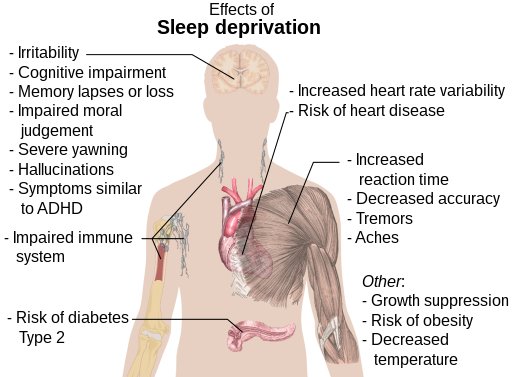Main Category: Obesity / Weight Loss / Fitness
Also Included In: Cancer / Oncology
Article Date: 16 Jul 2012 - 16:00 PDT
Experts have been questioning if hormone-suppressing drugs is the best treatment for obese women because they still have higher levels of estrogen than normal weight women even after treatment. The Institute of Cancer Research in London and The Royal Marsden NHS Foundation Trust, conducted a study and found that hormone-suppressing drugs did greatly decrease estrogen levels in obese women, however those levels still more than doubled a normal weight woman's level.
The experts published their study in the Journal of Clinical Oncology hoping their finding will help doctors be able to provide the best treatment for overweight and obese women. Scientists say that women receiving treatment for breast cancer should not be affected by these findings while emphasizing that the effect of obesity was modest.
More than three quarters of breast cancers need estrogen to grow, so one of the best ways to treat it is by stopping the hormone's ability to increase. As we already know, women with obesity have higher levels of estrogen than normal weight women. This new research shows that overweight women's hormone-suppressing drugs (aromatase inhibitors) considerably decreases their levels, but those levels are higher during treatment than normal weight women who receive the same treatment.
Senior author, team leader in the Breakthrough Breast Cancer Research Centre at The Institute of Cancer Research, and head of the academic department of biochemistry at The Royal Marsden, Professor Mitch Dowsett, said:
"We found that women with higher BMIs had more estrogen remaining in their blood after treatment than healthy-weight women, which is consistent with previous suggestions that aromatase inhibitors might be slightly less effective in these women. Our findings are based on laboratory studies, so we would need to carry out clinical trials to tell us whether women with a higher BMI would benefit from changes to their treatment. Women with higher BMIs should certainly not be alarmed by this finding or stop taking their treatment. Our study takes us a step closer to understanding which of the treatment options available might be the most suitable for individual women."
The research team reviewed a recent study that found the aromatase indicator anastrozole had no better influence than an older drug, tamoxifen, in women with higher BMI. Tamoxifen is, however, more effective in the general population.
Even though it is possible that tamoxifen is more effective in women who are overweight, the researchers wanted to see if there was another possibility. They wanted to research if aromatase inhibitors had less of an influence these women.
Two aromatase inhibitors were examined- anastrozole and letrozole (a more potent drug). 54 postmenopausal women were examined who were treated at the Edinburgh Breast Unit and who had estrogen receptor positive breast cancer. The women were treated with either 3 months of adjuvant anastrozole then 3 months of letrozole, or the drugs in the opposite order. 44 of those patients were able to give data before and after treatment on their BMI and estrogen levels. Their levels of estradiol and oestrone sulphate in the blood were measured.
Results showed:
- Before treatment, women with higher BMIs also had higher estrogen levels (women with BMIs between 30 and 35 had about 3 times more plasma estrogen than women with a BMI of 25 or less.
- Women with BMIs between 30 and 35 still had levels of plasma estrogen 3 times higher than healthy weight women after letrozole treatment.
- The same trend for letrozole was seen in the anastrozole treatment, but it did not reach statistical significance.
Chief Executive of The Institute of Cancer Research, Professor Alan Ashworth, said:
"Aromatase inhibitors have played an increasing role in breast cancer treatment over the past decade, so it is important to understand the factors that affect how well they work in individual women in order to allow doctors to choose the best possible drug from the range available."
Written by Sarah Glynn
Copyright: Medical News Today
Not to be reproduced without permission of Medical News Today
- Additional
- References
- Citations
Mitch Dowsett, Jack Cuzick, Jim Ingle, Alan Coates, John Forbes, Judith Bliss, Marc Buyse, Michael Baum, Aman Buzdar, Marco Colleoni, Charles Coombes, Claire Snowdon, Michael Gnant, Raimund Jakesz, Manfred Kaufmann, Francesco Boccardo, Jon Godwin, Christina Davies and Richard Peto
Journal of Clinical Oncology November, 2009 doi:10.1200/JCO.2009.23.1274 Please use one of the following formats to cite this article in your essay, paper or report:
MLA
APA
Please note: If no author information is provided, the source is cited instead.
Add Your Opinion On This Article
'Obesity May Affect Response To Breast Cancer Treatment'Please note that we publish your name, but we do not publish your email address. It is only used to let you know when your message is published. We do not use it for any other purpose. Please see our privacy policy for more information.
If you write about specific medications or operations, please do not name health care professionals by name.
All opinions are moderated before being included (to stop spam)
Contact Our News Editors
For any corrections of factual information, or to contact the editors please use our feedback form.![]()
Please send any medical news or health news press releases to:
Note: Any medical information published on this website is not intended as a substitute for informed medical advice and you should not take any action before consulting with a health care professional. For more information, please read our terms and conditions.

